Introduction
The Agile journey represents more than a shift in methodology; it signifies a cultural transformation that fosters continuous improvement in software development. Agile is anchored in four foundational values—prioritizing individuals and interactions, delivering working solutions, fostering customer collaboration, and responding to change. However, adopting Agile is often met with resistance at various organizational levels. Successfully navigating this resistance is crucial to creating an environment where adaptability and progress thrive.
In this comprehensive guide, we delve into Agile’s core values, the nuances of resistance, and strategic approaches to fostering a culture that not only embraces change but thrives on continuous improvement.
Agile’s Four Core Values
At its core, Agile is built on four fundamental values that serve as guiding principles:
- Individuals and Interactions Over Processes and Tools
Agile prioritizes collaboration, recognizing that meaningful conversations drive better solutions than rigid processes or tools. - Working Software Over Comprehensive Documentation
The goal is to create software that delivers real value rather than being bogged down by extensive paperwork. - Customer Collaboration Over Contract Negotiation
Agile fosters continuous communication with stakeholders to align the product with evolving business needs. - Responding to Change Over Following a Plan
Adaptability is a key strength of Agile, allowing teams to refine their approach based on real-time feedback and shifting requirements.
These values shape the Agile mindset, emphasizing flexibility, teamwork, and a commitment to delivering tangible business outcomes.
Recognizing the Nuances of Resistance
Resistance to Agile adoption is not always overt; it can be deeply embedded within organizational structures and attitudes. Understanding where resistance originates is crucial for addressing it effectively.
- Leadership vs. Middle Management Resistance
While senior leadership often endorses Agile, middle management may perceive it as a threat to their roles. Their resistance is usually rooted in uncertainty regarding shifting responsibilities, loss of control, and adaptation challenges. - Cultural Inertia
Organizations with rigid hierarchies and long-standing traditions may struggle to embrace Agile’s fluid and collaborative approach. - Fear of Change
Employees accustomed to structured workflows may resist Agile due to apprehensions about new methodologies and unclear expectations.
Understanding the Role of Middle Management
Middle managers act as the bridge between leadership and execution teams. Their concerns include:
- How Agile impacts hierarchical structures
- Redefining their role in a self-organizing team environment
- Balancing strategic oversight with team autonomy
Addressing their concerns through targeted training, clear communication, and structured role adaptation ensures a smoother Agile transformation.
Fostering Trust and Autonomy
Agile flourishes in an environment where trust and autonomy are prioritized. Encouraging teams to self-organize, make collective decisions, and take ownership of their work drives engagement and efficiency.
Key Steps to Build Trust:
- Transparent Communication: Keep all stakeholders informed about Agile’s impact and benefits.
- Leadership Support: Ensure leaders actively endorse and model Agile principles.
- Empowering Teams: Encourage a mindset where teams take initiative and solve problems independently.
Aligning Leadership Intentions with Execution Challenges
A common pitfall in Agile adoption is misalignment between leadership’s vision and ground-level execution. To bridge this gap:
- Define clear objectives and expected outcomes.
- Ensure leadership provides consistent support and resources.
- Regularly evaluate Agile implementation effectiveness and make necessary adjustments.
Cultivating a Culture of Continuous Improvement
Beyond practices and tools, Agile requires an organization-wide shift in mindset. The following elements are essential:
- Comprehensive Training: Equip teams with the necessary Agile methodologies and frameworks.
- Feedback Loops: Encourage continuous feedback from both employees and stakeholders.
- Incremental Adaptation: Gradual implementation reduces resistance and facilitates smoother transitions.
Addressing the Fear of Change
The reluctance to embrace Agile often stems from fear—fear of the unknown, failure, or inefficiency. Organizations can combat these fears through:
- Transparent Communication: Explain why Agile is being adopted and how it benefits everyone.
- Pilot Programs: Implement Agile in smaller teams first before scaling up.
- Success Stories: Showcase positive examples of Agile transformations to build confidence.
Conclusion
Embracing Agile is a transformative journey that requires commitment, adaptability, and strategic alignment across all levels of an organization. Successfully implementing Agile demands a clear understanding of its core values, proactive engagement with middle management, and fostering a culture of trust and continuous improvement. By addressing resistance thoughtfully and methodically, organizations can unlock Agile’s full potential—turning challenges into opportunities for growth and innovation.
Frequently Asked Questions (FAQs)
1. Why do organizations resist Agile adoption?
Organizations resist Agile due to cultural inertia, fear of change, uncertainty among middle management, and lack of clear implementation strategies.
2. How can middle management be more accepting of Agile?
Middle management can be engaged through clear communication, training programs, role redefinition, and inclusion in decision-making processes.
3. What are the biggest challenges in Agile transformation?
Common challenges include resistance from employees, lack of executive support, misalignment between leadership and execution teams, and difficulties in adapting to iterative processes.
4. How long does it take for an organization to fully transition to Agile?
The transition time varies based on company size, culture, and level of resistance. Some organizations adapt in months, while others require years for full Agile integration.
5. What strategies help reduce resistance to Agile?
Effective strategies include pilot programs, transparent communication, leadership endorsement, and providing Agile training to employees at all levels.
By addressing these common concerns and adopting Agile strategically, businesses can transform resistance into acceptance, ultimately paving the way for a culture of innovation and continuous improvement.For more insights on Agile adoption and overcoming resistance, visit Go AP Stax Solutions.






